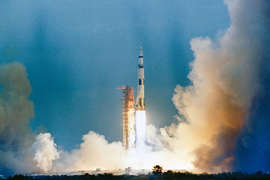
This Russian guessed everything 50 years ago …
Along with Tsiolkovsky, Yuri Kondratyuk is called today one of the main theoreticians of cosmonautics. However, the overwhelming majority of our compatriots know nothing about him. Meanwhile, his unique fate in terms of the number of action-packed moves is capable of overshadowing all the novels of Alexandre Dumas put together. The name of Yuri Kondratyuk sounded all over the world in 1969, when the Americans took revenge from the USSR in the space race and were the first to land on the moon. Life magazine published an interview with one of the leading engineers of the lunar project, John Houbolt. A NASA employee talked about the controversy over the lunar flight scheme and how his concept of “meeting in orbit” won, that is, the idea that the main ship should not be landed on the moon. Let it remain in satellite orbit, and it is enough to lower a small lunar module to the surface. Otherwise, the flight will require an incredible amount of fuel. By the way, this scheme of flight to the moon is still the only possible one at the current level of technology development. At the same time, Houbolt dropped the phrase that during the start of the lunar mission, he recalled “another engineer, a Russian self-taught mechanic, whose dreams were shattered by the skepticism of others.”
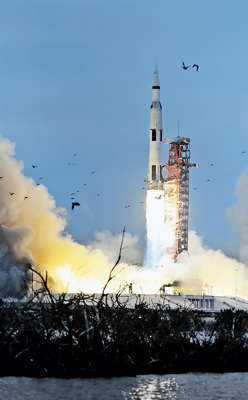
– Lord, he went through the same thing as me! said Houbolt. – Thinking about it, I could not contain my feelings, watching the takeoff of Apollo 9.
The author of the interview, journalist David Sheridan, explained that recently Hubolt read the work of Yuri Kondratyuk, who, 50 years before the launch of Apollo, calculated that a “meeting in orbit” is the best way to land on the moon. But the Soviet government neglected him, and Kondratyuk died in obscurity.
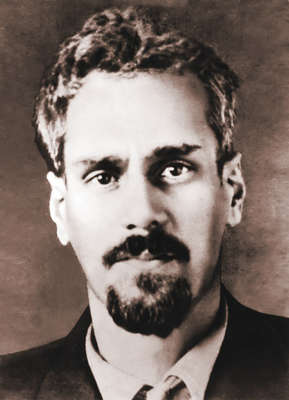
After this interview was read in the USSR, the domestic competent authorities began to find out how an unknown Soviet theoretical scientist helped our sworn friends overtake us in the space race. And an amazing thing turned out: the real Yuri Kondratyuk died in 1921, and Alexander Shargei, a former member of the White movement, was hiding under his name.
The man in the iron mask
Parents are not chosen, but from the point of view of the dictatorship of workers and peasants, Alexander Shargei could not boast of the correct origin. He was the son of a baptized Jew Ignatius Shargei and a Swedish baroness Ludmila Schlippenbach. Pushkin's line from the poem “Poltava”, where “… the ardent Schlippenbach surrenders,” is just about the ancestor of the Russian branch of the Schlippenbachs. His father soon left the family, his mother died early, Alexander was raised by his great-uncle, an unusually educated man. The boy received a very good high school education, then in 1916 he entered the Petrograd Polytechnic Institute. Even then, space flights occupied the imagination of Shargei Jr. However, on the occasion of the First World War, the country needed a large amount of cannon fodder. After four months of study, student Shargei was drafted into the active army. After graduating from the school of warrant officers, he was sent to the relatively calm Caucasian front. After the revolution and the end of the First World War, Alexander returned to Kiev, he was adopted by his stepmother – the second wife of Alexander Kareev's father. Soon Denikin's army entered the city, Shargei, as a participant in the First World War, was mobilized, but at the first opportunity he fled from the train, which was sent to storm Odessa. The romantic of space did not want to take part in the meat grinder of the Civil War. However, the documents remained with the Denikinites. And a person without a passport in these uplifting times could be gladly shot by red, white, and green, in short, fighters for a bright future for flowers of any political spectrum. The stepmother helped out, through mutual acquaintances she made an agreement with the family of a student of Kiev University Yuri Vasilyevich Kondratyuk, who had just died of tuberculosis, so that his documents were handed over to Alexander.
Thus, a man named Alexander Shargei disappeared into the abyss of revolutionary events. His place was taken by Yuri Kondratyuk. It was dangerous to remain in Kiev, where many knew both Shargei and Kondratyuk, and the descendant of the Schlippenbachs went to Siberia. Yuri Kondratyuk (from now on we will call him only that way) got a job as a mechanic in the Union “Soyuzkhleb”, was engaged in the repair and construction of granaries. A talented self-taught, he received several inventive patents, quickly moved up the career ladder, and in 1927 took the position of chief engineer.
But the main business of his life was space. In 1929, with his own money, he published his own book entitled “The Conquest of Interplanetary Space” – the very one that would later shake the American John Houbolt. One copy was sent to Konstantin Tsiolkovsky, the classic treated the text favorably. Correspondence began between romantics of space. The rocket specialists learned about Kondratyuk, although the circle of these people was narrow and they were terribly far from the people.
A criminal case without a single nail
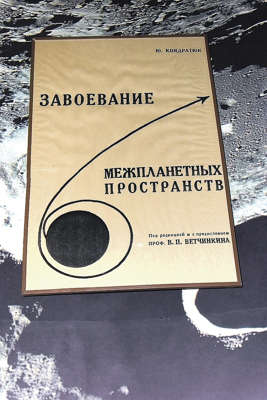
In Siberia, Yuri was somewhat lucky – he managed to get a prison sentence in relatively herbivorous times, even before the start of the Great Terror. It was planted in 1930 as part of a pest control campaign. Russia was still an agrarian country, after the revolution there were few good engineers left, many, such as the inventor of the helicopter Sikorsky and the creator of television Zvorykin, went abroad. And the equipment was worn out and outdated, hence the constant accidents and all kinds of emergencies in production. But to blame everything on the intrigues of enemies for the young Land of the Soviets was more profitable than taking responsibility for the devastation. However, the story of the landing of Kondratyuk was nonetheless unique. Usually the reason for the criminal case was some kind of accident. And his creation – the world's largest wooden granary “Mastodont” – outlived its creator, stood for half a century and burned down in the late 1970s, after it was decommissioned. The granary was interesting because it was built on the principle of wooden temples of the North, that is, without a single nail. It was not a whim of Kondratyuk, just in Siberia there was a shortage of fastening materials and even those very nails, so the space theorist found an original solution. This is precisely what Kondratyuk was accused of. The reason for the arrest was a denunciation, our hero and five more specialists were investigated. They were accused of wanting to destroy the grain, so they built a storage without nails, hoping that it should fall apart. Kondratyuk spent 6 months in a pre-trial detention center, and was sentenced to three years in camps under Article 57, paragraph 8, “economic sabotage”. However, since there were not enough technically competent people, Yuri served time in a sharashka – a special design bureau No. 14, which worked under the control of the OGPU.
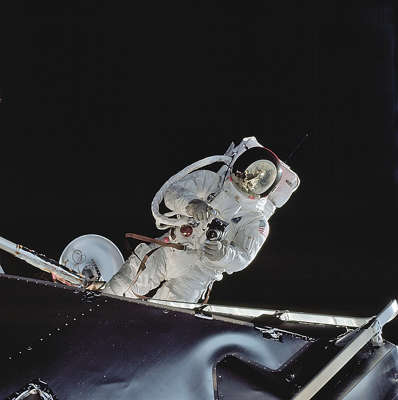
Where the idea of the Ostankino tower was born
In 1932, the People's Commissariat of Heavy Industry, which was headed by Sergo Ordzhonikidze, a fan of wind energy, announced a competition to create a project for the Crimean wind farm. Kondratyuk decided to participate in this project together with another prisoner – Pyotr Gorchakov (he was in prison on the same case as Kondratyuk) and Nikolai Nikitin, the future creator of the Ostankino tower. Kondratyuk's project was recognized as the best, the Crimean wind farm was planned to be built on the top of Mount Ai-Petri (1200 meters above sea level), the windmill itself, according to the plan, reached the height of a 40-storey building, and the structure had to withstand hurricane gusts of sea wind. They managed to lay the foundation under the wind farm, but in 1937 the initiator of the idea, Sergo Ordzhonikidze, shot himself, wind power was recognized as unpromising, and Kondratyuk's project was curtailed. But this plot had two very important consequences. First, on the basis of Kondratyuk's design ideas and engineering solutions for the Crimean wind farm, his student Nikolai Nikitin built the Ostankino TV tower 30 years later. And secondly, in 1933, having arrived in Moscow on business of the Crimean wind farm, Kondratyuk met there with 26-year-old Sergei Korolev, who still had to become an “enemy of the people” and, as a result of “sabotage activities”, create Soviet cosmonautics.
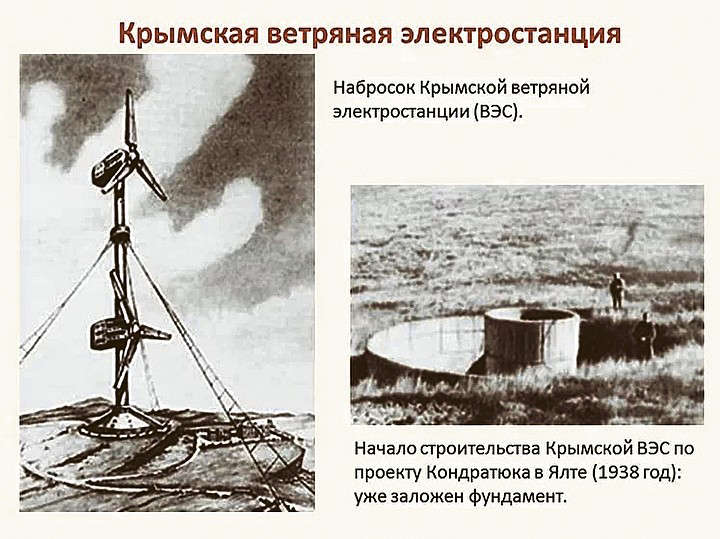
Korolev at that time headed the GIRD – the Group for the Study of Jet Propulsion, while the team suffered a heavy loss – in the spring of typhoid, the main theorist of the group, Friedrich Zander, died. Knowing about the work of Kondratyuk, Korolyov called him to the place of Tsander. For the first time, Kondratyuk was offered to officially do what interested him most in life. But for the genius nugget, this turn of events turned into a personal tragedy. Military projects, and even more so everything related to the creation of new missile technology, were under the special control of the NKVD. After reviewing the questionnaire that was to be filled in when applying for a job, Kondratyuk realized that he would not be able to work at the GIRD. For example, in the questionnaire it was necessary to indicate what his parents were doing before 1917, but the problem was that he did not know the parents of the person whose name he bore. There were other tricky questions, and Kondratyuk realized that his White Guard past, a story with forged documents and life under a false name, would inevitably emerge. For a person already convicted of sabotage, this could end in execution. It is unlikely that Korolev, who understood the scale of Kondratyuk's personality, would have been able to defend him, given that Sergei Pavlovich himself, 5 years later, fell into the meat grinder of senseless repression. Yuri Vasilievich was forced to reject the Korolyov's proposal. If the circumstances were different, perhaps in school textbooks they would write about the two godfathers of Soviet cosmonautics – Korolev and Kondratyuk, and we would not have lost the lunar race to the Americans … But one way or another, Yuri Kondratyuk continued his underground life as a theoretician of cosmonautics. And officially he was engaged in wind energy, worked until the war in the Design and Experimental Office of the Wind Power Plant as the head of the design department. In 1941 he was drafted to the front. On February 25, 1942, the assistant to the platoon commander of the 110th rifle division, Yuri Kondratyuk, died in battle and was buried near the village of Krivtsovo, Bolkhovsky district, Oryol region.
BTW
What else did Yuri Kondratyuk come up with
He suggested using the gravity of celestial bodies when calculating the trajectories of spaceships.
Came up with a schematic diagram and made a description of a four-stage rocket.
He put forward the idea of creating “interplanetary intermediate bases” – the prototype of the current orbital stations.
I figured out what the spacesuit should look like even before the word itself was coined.
He came up with a scheme for a spacewalk through an airlock.
I foresaw that during takeoff and landing, astronauts would experience enormous overloads. He offered to “put the naked body in a smooth, but tight-fitting shape everywhere” – according to this principle, lodgements for astronauts are made today, they are molded exactly according to the shape of the body.
He suggested using the planet's atmosphere for braking spaceships.
Question – bluntly
Did the Americans borrow the idea of a lunar landing?
The Russian media are discussing the version that the Americans took the lunar landing scheme for their Apollo from Kondratyuk's books. However, Doctor of Physical and Mathematical Sciences Vladimir Zarko, head of the laboratory of the Institute of Chemical Kinetics and Combustion of the Siberian Branch of the Russian Academy of Sciences and an expert on the scientific heritage of Yuri Kondratyuk, believes that this version, which is complementary to Russian science (without us, the Yankees are not capable of anything) has no basis. …
“John Houbolt’s words were simply misinterpreted,” he says.
The Americans did translate for their specialists everything that was published on missile topics in the Soviet Union. And surely the developers of “Apollo” could read the only lifetime published book by Yuri Kondratyuk, “The Conquest of Interplanetary Spaces.” However, there is not a word about the lunar flight scheme. It is written about this in another work, it is called “He who will read in order to build.” But this book was not published until 1964. Previously, the Americans could not read it in any way, unless we take into account the fantastic version that they somehow studied the manuscript. But by 1964, the concept of a “meeting in orbit” of the lunar module and the mother ship had already been adopted in the United States for several years.
According to Zarko, one cannot exaggerate the real contribution of Kondratyuk. His works were full of ingenious guesses that were really ahead of their time, but these ideas did not receive development – no one knew about them, because their author was forced to hide for most of his active life. The ideas formulated by Yuri Kondratyuk were later discovered and implemented by other people in other countries in a completely independent way. Only a belated posthumous recognition fell to the lot of Yuri-Alexander.
Great social experiments cost us millions of unlived lives, unrevealed discoveries, unwritten books, unrealized projects … All this cannot be returned. But maybe this sad experience will become for us a kind of inoculation against new adventures.
VOCATION
Justice helped restore Komsomolskaya Pravda
Probably, Sergei Korolev knew the secret of the second name of Yuri Kondratyuk. In any case, it is known that after the war the general designer made inquiries in the archives addressed to Alexander Shargei. And in 1947 the book “The Conquest of Interplanetary Spaces” was republished. Experts say that it was impossible to publish a book on missiles in the post-war USSR without Korolev's sanction. In 1965, in the book “Pioneers of rocketry – Kibalchich, Tsiolkovsky, Tsander, Kondratyuk. Selected Works ”for the first time the full text of Yuri Vasilyevich’s work“ For those who will read in order to build ”is published. Sergei Korolev and the famous creator of rocketry Valentin Glushko mention the merits of Kondratyuk. But the real breakthrough came after the publication of Komsomolskaya Pravda. First, in 1969, an article by the scientific columnist Vladimir Orlov, “The Man Who Foreseen,” was published. Based on the Life magazine mentioned at the beginning of the interview, our colleague wrote that the Americans recognized the priority of the Soviet scientist and used his lunar landing scheme for their Apollo.
A year later, the judicial collegium for criminal cases of the Supreme Court rehabilitated Yuri Kondratyuk for lack of corpus delicti.
In 1974, the legendary journalist Vasily Mikhailovich Peskov took up the history of Kondratyuk, who, in co-authorship with Boris Strelnikov, published the article “Behind the Scenes of Glory”. It quotes the words of the American scientist Dr. Lowe, who, after the safe return of the Apollo 11 crew, said: “… We found a small inconspicuous booklet published in Russia immediately after the revolution. Its author, Yuri Kondratyuk, substantiated and calculated the energy profitability of landing on the Moon according to the scheme “flight to the Moon's orbit – launch to the Moon from orbit – return to orbit and docking with the main ship – flight to Earth …” This lunar landing scheme is today called “ Kondratyuk track “. The name of Yuri Kondratyuk is immortalized in the American Museum of Space History along with the names of Tsiolkovsky and Tsander. The Yu.V. Kondratyuk Museum was established in Novosibirsk. Postage stamps are issued in his honor, and Google dedicated to Kondratyuk-Shargey its corporate postcard splash screen, which it publishes on the occasion of significant events. So the IT giant celebrated the 115th anniversary of the birth of a person, like Tsiolkovsky, ahead of his time.

